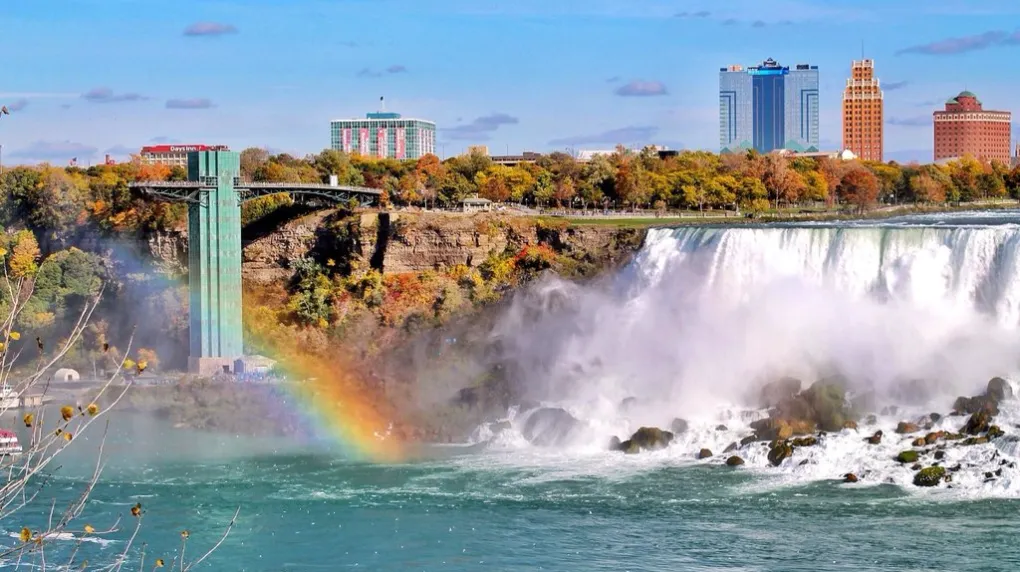Did you know...?
History of Niagara Falls
The Niagara River and Great Lakes Basin is a legacy of the last Ice Age 18,000 years ago. Ontario was covered by ice sheets 2-3 kilometers thick, but the Niagara Peninsula became free of the ice 12,500 years ago.
Only 1% of the water in the Great Lakes is renewable through precipitation and ground water each year. Ninety-nine percent of the water is ‘fossil’ water from the last ice age. The falls erode at a current rate of 1 foot per year.
Over the past 560 years, the recession is estimated at 1-1.5 m/year. – Niagara Falls used to be situated at the Queenston Heights escarpment. It took 10,000-12,000 years for it to erode to its current position at Table Rock 11 kilometers (7 miles) away. See Niagara Falls up close on a Niagara Falls day trip from Toronto.

Going Over the Falls
14 people have intentionally gone over the falls – 5 lost their lives. An intentional trip over the falls now carries a $10,000 fine (if you survive). Annie Taylor, a 63-year-old schoolteacher from Michigan was the first person to go over Niagara Falls in a barrel and survive.
Only one person has unintentionally gone over the falls and survived. It was a 7 year old boy named Roger Woodward. He was picked up by the Niagara Cruise boat.
One 40 year old man from Michigan went over Niagara Falls on October 20, 2003 without any protection and survived.
People have tried to go over the falls in a kayak (Jesse Sharpe, 28, from Tennessee on June 5, 1990) and a jet ski (Robert Overacker, 39, from California on Oct. 1, 1995).
Neither man survived.
American - Canadian Falls
– 90% of the water going over Niagara Falls goes over the Canadian Horseshoe Falls – the American falls gets only 10% Scientists believe that the American Falls could dry up in 2,000 years.
The brink of Niagara Falls used to erode at a rate of 1 meter per year – since the power stations were built and some of the water is diverted away from Niagara Falls – it only erodes at a rate of 1 meter per 30 years.


